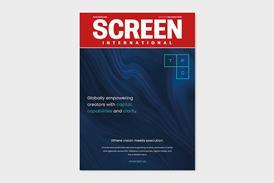"Machinima is a real threat to CGI animation," says Paul Marino, co-founder of the Academy of Machinima Arts and Sciences. "Within the next decade the majority of animation films produced will be machinima."
It is a bold claim, considering that most people are still unfamiliar with the machinima concept. But it is a claim made more persuasive by the details recently emerging about James Cameron's new project Avatar.
Machinima is the making of films using a 3D virtual world, whether it is the internet-based Second Life, an online role-playing game like World Of Warcraft, or a video game such as Halo.
In the mid-1990s, inventive players of shooter game Quake used the functions available for recording sequences and developing new levels to make narrative films. A mix of animation and live-action film-making, machinima allows players to direct characters as if they were actors. Fast and cheap to make, it is an appealing alternative to CGI for independent film-makers and small production companies.
Cameron is using game techniques akin to Nintendo Wii technology in making Avatar. He has described the virtual world in which he is producing the film as "a big powerful game engine". Computer-generated characters will be blended with real life, bridging machinima and CGI animation.
Marino predicts that other film industry players will soon follow Cameron's lead.
"Animation at present is hand-crafted individual frames; machinima is the actions of characters captured within scenes," he explains. "With CGI, the computer then converts the frames to video form in a time-consuming process called rendering. Machinima shortcuts the rendering process. In the progression of game technology we are moving steadily closer to what we now expect an animation film to look like. I think soon an animation studio will embrace this technology as it stands."
With a background in animation, Marino has been making machinima films for 10 years, since co-founding The ILL Clan collective with collaborator Frank Dellario. He currently works as senior cinematic designer for one of the most aesthetically advanced video games on the market, BioWare's Mass Effect.
Games companies are welcoming this movement and building software into their games that enables film-making. With machinima makers collaborating with software companies to have more control over the look of the environments in which they work, the gap between CGI and machinima is closing.
The new game releases are close to CGI quality. Animation technology progresses at a slower rate, with minimal difference seen between Toy Story and Toy Story 2, for example.
"There's been a glut of animated films in the last few years and many are indistinguishable and unexceptional," says Marino.
"These animations cost so much to make, they need to have a wide appeal. With machinima films the level of the storytelling is higher, and that feeds into the aesthetic quality. It is so low cost that the film does not need to cater to a large audience."









![[Clockwise from top left]: 'The Voice Of Hind Rajab', 'A House Of Dynamite', 'Jay Kelly', 'After The Hunt', 'The Smashing Machine'](https://d1nslcd7m2225b.cloudfront.net/Pictures/274x183/1/7/0/1459170_veniceawards_837515.jpg)








No comments yet